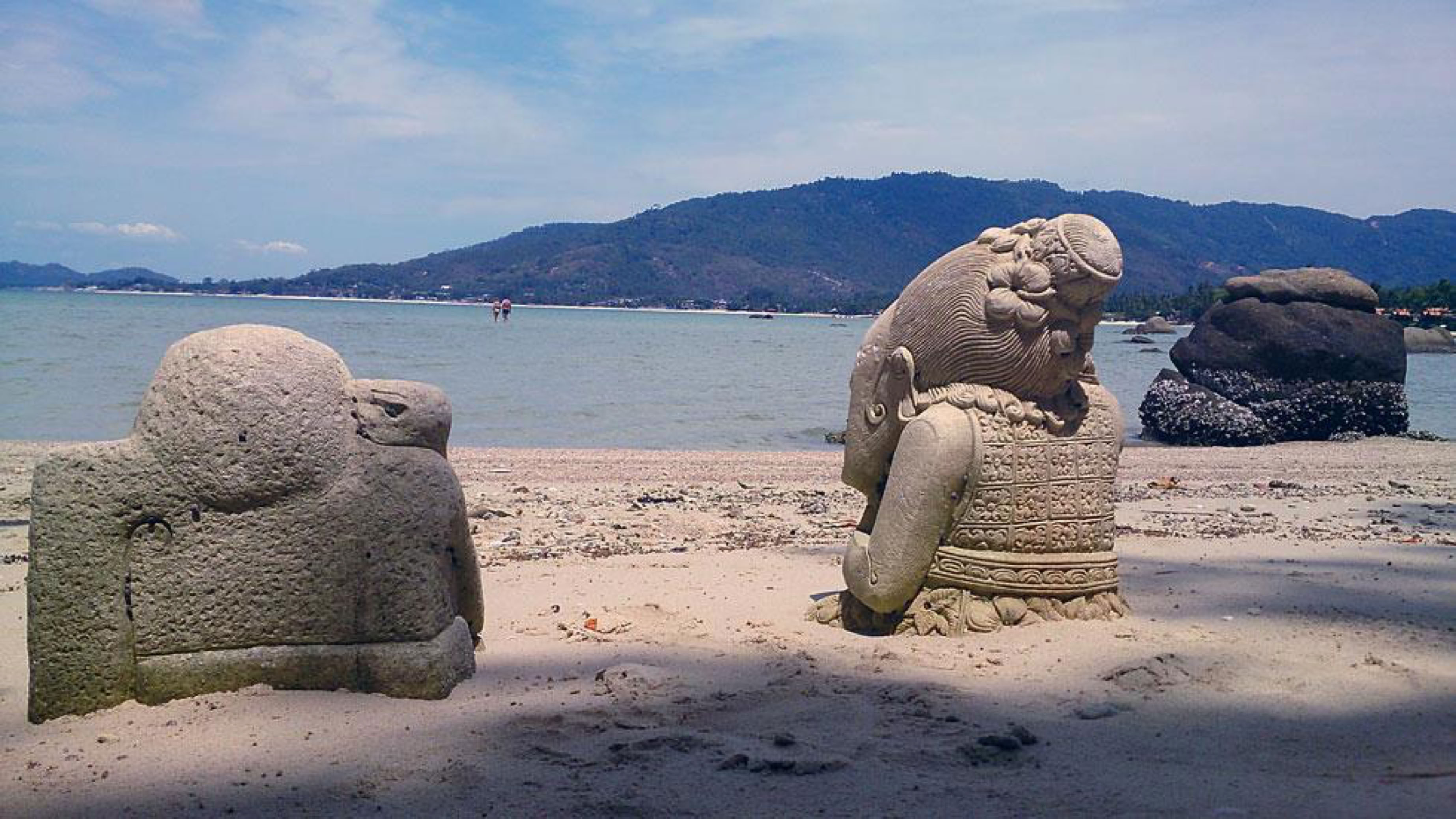

Ancient Taoism in Contemporary
Management Training & Martial Art


MARTRIX ORG.
Get your feeling working!
MARTRIX ORG.
Get your feeling working!
Ancient Taoism in Contemporary
Management Training & Martial Art


• HOME • About MARTRIX • Workshops • Trainers • Management Training • Coaching • Intuitive Boxing • Taikiken • Hachidankin • Baduanjin • 99-Taijiquan • Longevity • MartriX Exclusive Shop • Video Clips • Downloads • BrainQuakes• Index Page • Links • E-mail • HOME Nederlands •

THAILAND
Thailand is a Southeast Asian, predominantly Buddhist kingdom almost equidistant between India and China. For centuries known by outsiders as Siam.
Thailand has been something of a Southeast Asian migratory, cultural and religious crossroads.
Theravada Buddhism is the professed religion of more than 90% of all Thais, and casts strong influences on daily life.
Besides sustaining monastic communities, Thai temples have traditionally served other purposes as the village hostelry, village news, employment and information agency, a school, hospital, dispensary and community center to give them vital roles in Thai society. The Thais have always subscribed to the ideal of religious freedom. Thus size able minorities of Muslims, Christians, Hindus and Sikhs freely pursue their respective faiths.
Bangkok
"The City of Angels" Metropolis lies on both banks of the Chao Phraya, the main river of Thailand, 20 km upstream from the Gulf of Thailand. King Rama 1, the founder of the present Chakri Dynasty built the present capital in Bangkok in 1782. The Royal Founder took great care to build palaces and temples of the new capital in the same style of Ayuthaya, the previous capital, which in turn had its origin from Sukhothai, the first Thai capital built in the 13th century. Both former capitals, now national historical parks, have been placed in the UN's list of world cultural heritages.
THE NORTH
Chiang Mai
the principal northern city, some 700 km north of Bangkok, was founded in 1296 and is located in a fertile valley some 1,000 feet above sea level.
Chiang Mai is famous for beautiful women, historical temples dating from the 1300s, crisp mountain scenery, distinctive festivals and handicrafts, and several formerly itinerant hill tribes of Tibeto-Burman origin.
Chiang Mai presents a wonderful contrast to Bangkok. It is Thailand's second largest city, though only one-fortieth the size of the capital and quite unlike it in most other respects. Of great antiquity and moulded by a distinct history, Chiang Mai is a most attractive destination with sights and charms peculiar to itself and the picturesque Northern region of which it is the center. It was once the capital of Lanna, an independent Thai kingdom, and has preserved its unique cultural heritage to a marked degree. Accordingly it is a veritable treasure house of the arts and architecture unique to the region.
Within the city's original perimeter, still marked by moat and fortified gates, are numerous ancient Buddhist temples and other monuments attesting to a distinguished past. Close by are more magnificent attractions, including Wat Prathat Doi Suthep, and Phuping Palace, the summer residence of the Royal Family.
THE SOUTH
Lush tropical islands, dazzling palm-fringed beaches, coral reefs teeming with colorful marine life, picturesque fishing villages with distinctive hand-painted boats, remote national parks, forested mountains, waterfalls, historic cities, ubiquitous rubber estates, scenic wildlife sanctuaries and temples clearly define the region's visual appeal.
Koh Samui
Thailand's third largest island, 268 nautical miles south of Bangkok, and jewel of a sparkling archipelago that contains the lovely Angthong (Golden Bowl) Marine National Park.
Koh Samui is located in Surat Thani province and composed of various islands noted for silvery sand and colorful coral reefs.

© MARTRIX org. Design by:
TheFeel.org multimedia
https://martrix.org
info@thefeel.org
Last modified
May 2025

